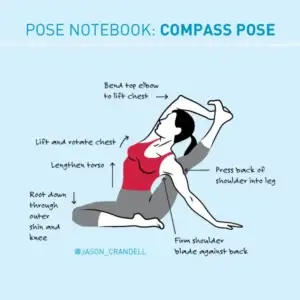In 20 years of teaching yoga, I’ve never played music in my class. Not once. If you play music in your class — or you prefer to go to classes with music — I don’t blame you. In fact, there are plenty of good reasons to listen to music when you practice and teach yoga. Playing music is emotive, it’s motivating, it’s enjoyable, and it creates an ambiance. Even more, music can help hold the space for your students and allow you to rest your voice more often. Still, I don’t play music in any of my classes, and, while I’ve changed my tune about countless other things in the past, I don’t anticipate a James Taylor accompanied Savasana in my classes any time soon.
I get asked all the time why I don’t play music in my yoga classes and my immediate answer is that I would never subject anyone to my record collection. Unless you already listen to Sick of It All and Avail in steady rotation, we’re not on the same page with our musical preferences. I respect that most of my students’ musical sensibilities are different than mine and I don’t want to make them suffer through my taste. Here are a few other reasons I prefer a quiet classroom.
Yoga and Music: Reasons Why I Don’t Play Music in My Yoga Classes
BECAUSE IT’S QUIET
I live in San Francisco. Our street is not particularly busy, but our upstairs neighbors are loud enough to drive me to the brink of insanity each day. I use a laptop, an iphone, and a Kindle each day. I listen to the radio, I watch television, I interact with the world around me and I’m also overstimulated. The majority of my students are the in similar circumstances and the yoga room is one of the few environments where they can get peace and quiet. I cherish the silent moments of Tadasana, seated meditation, and Savasana. I revel in hearing everyone’s breath in Surya Namaskar and knowing that when I am quiet for a moment when the entire room settles.
BECAUSE IT’S A !@#$%!! CLASSROOM
Alright, alright, alright, I know I sound uptight. So, let me own this one: Yes, I’m being uptight. That said, I still think that yoga is a subject matter. It’s a discipline. It’s not just a 90-minute thing that makes you feel better about existence for a little while. Yes, thank god, it does have this effect. But, to me, yoga classes are learning environments. We learn how to use our body with greater skill, care, and efficiency. We become more adept at focusing our attention. We learn about the philosophical and historical context of the yoga tradition. We learn to become a witness that observes ourselves more objectively and compassionately. We learn to unplug for 60, 75, or 90 minutes at a time. For me, a quiet yoga room provides the best opportunity to have these experiences.
IT’S OLD SCHOOL
Sometimes I feel like I’m a dinosaur because I don’t play music in class. But quiet classes are old school. Meditating on subtle sound — -nada yoga — is old, but that’s not the same as doing Sun Salutations to beats supplied by your studio’s in-house DJ. The saints, sages, and mystics after which many postures were named weren’t concerned with their playlist. Krishnamarcarya and his principle students who have had such a lasting impact on contemporary practice taught in quiet rooms. And, very few of the West’s first generation of master teachers play music in their classe. Maybe they’re just fuddy duddy and I’ll be standing in the unemployment line with them soon. Maybe they just didn’t have the interest or technology, or maybe they were on to something important. I don’t have all the answers, but if you’re a dinosaur — or, if you choose to become one — you’ll have decent company.
I originally wrote and published this article for yogaglo’s blog. In case you missed the news flash, yogaglo is really awesome and you should practice and train with me on their streaming service. Please check them out!



